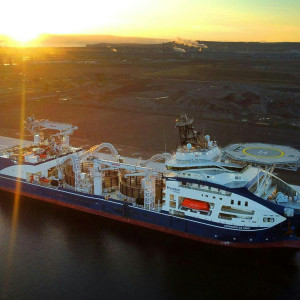Op-ed: Freeport status enables quick infrastructure development for UK’s offshore wind sector


By Matt Johnson, Teesworks As the UK strives toward its net zero 2030 goals, the offshore wind sector is entering a new phase--one that demands a stronger foundation of infrastructure, supply chain capacity and skilled talent. Freeport status is helping to meet these needs by enabling faster development of critical infrastructure.
Covering 4,500 acres, Teesworks sits at the heart of the UK's largest Freeport and industrial redevelopment zone in Tees Valley on the northeast coast of England. The region has long been one of the UK's most globally connected industrial economies, with about 70% of businesses internationally owned. The redevelopment of Teesworks has already created more than 2,725 long-term jobs, and its location on the North Sea coast provides direct access to some of the world's most active offshore wind development zones, including Dogger Bank[1], which is set to become the world's largest offshore wind farm upon completion in 2027.
Benefits of Freeport status
Freeport status plays a critical role in accelerating offshore wind delivery by offering targeted benefits for manufacturers and logistics operators.
These include 0% Employer National Insurance contributions for up to three years per employee on earnings up to GBP25,000 (US£33,622) per annum; up to 100% relief from business rates on certain business premises for a maximum of five years; enhanced tax relief for companies investing in qualifying new plant, machinery assets and buildings; and duty deferral while goods remain on site within designated customs zones. These incentives reduce upfront costs and financial risk, providing certainty and encouraging companies to invest in the development of offshore wind projects. In addition, companies acquiring or leasing land within a designated Freeport tax site can claim full relief from Stamp Duty Land Tax on qualifying transactions, provided the land or buildings are used for approved commercial purposes.
This exemption, available until September 2031, further reduces the cost of establishing or expanding operations and strengthens the financial case for investment within Freeport sites like Teesworks. Importantly, the establishment of customs zones within Freeports strengthens international partnerships and export opportunities. By allowing international partners to bring goods into the Freeport without immediately paying tariffs, operational costs are reduced, cash flow is improved and global companies are incentivized to collaborate with UK manufacturers or logistics operators.
This arrangement encourages inward investment and attracts long-term international partnerships and exports. At Teesworks, this has enabled development of key infrastructure and attracted global supply chain players looking to scale up quickly, such as SeAH Wind, Orsted and Cadeler. The former Redcar steelworks site[2], which ceased operations in 2015 following the liquidation of SSI UK[3], has undergone a significant transformation into a global hub for offshore wind manufacturing and logistics.
This redevelopment aims to support the UK's transition to clean energy and stimulate regional economic growth by combining large-scale infrastructure with Freeport incentives and a growing pipeline of skilled workers. Environmental considerations have been a critical component of the redevelopment project, involving a robust materials and waste management strategy, which diverted waste from landfill to maximize the reuse of earthworks materials, ensure environmental compliance and enhance project sustainability. Differentiating Teesworks from other UK and European offshore wind hubs is its integration of large-scale offshore wind manufacturing with deepwater loading facilities, particularly the SeAH Wind monopile manufacturing facility[4] and Steel River Quay[5].
This co-location reduces the need for component transport between sites, streamlines logistics and accelerates deployment timelines.
Combined with Freeport incentives, this integrated approach lowers operational costs compared with other hubs where manufacturing and port handling are separated.
References
- ^ Dogger Bank (www.offshore-mag.com)
- ^ former Redcar steelworks site (www.bbc.com)
- ^ liquidation of SSI UK (www.bbc.com)
- ^ SeAH Wind monopile manufacturing facility (www.seahwind.com)
- ^ Steel River Quay (steelriverquay.co.uk)